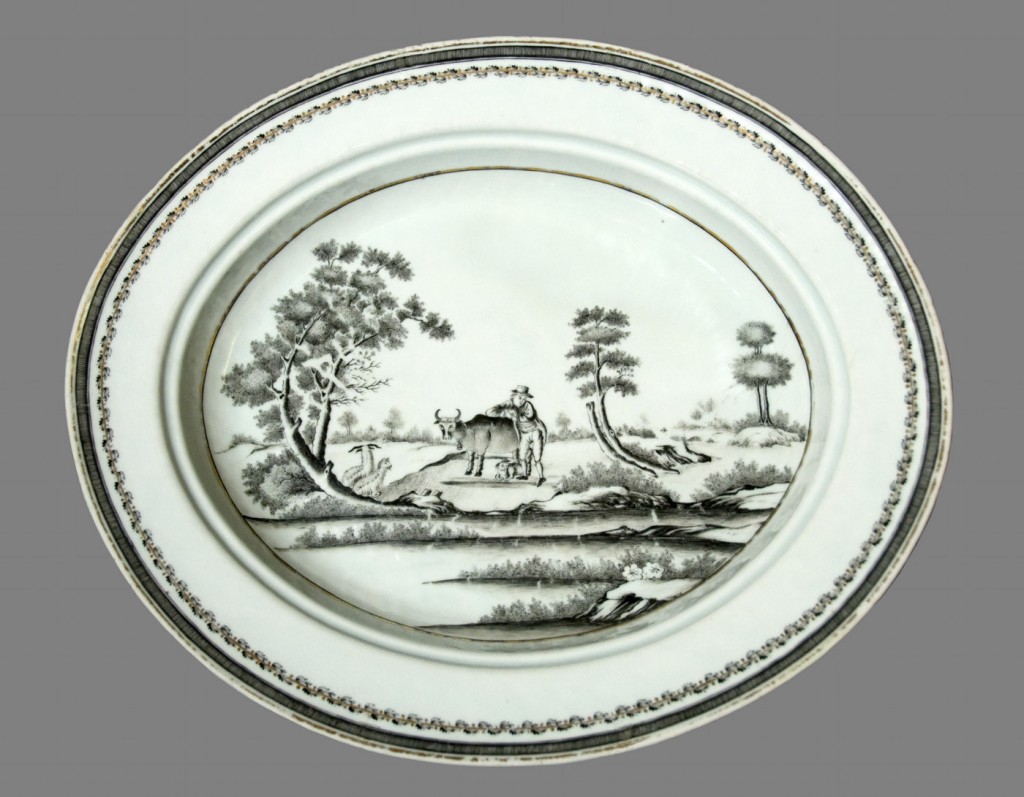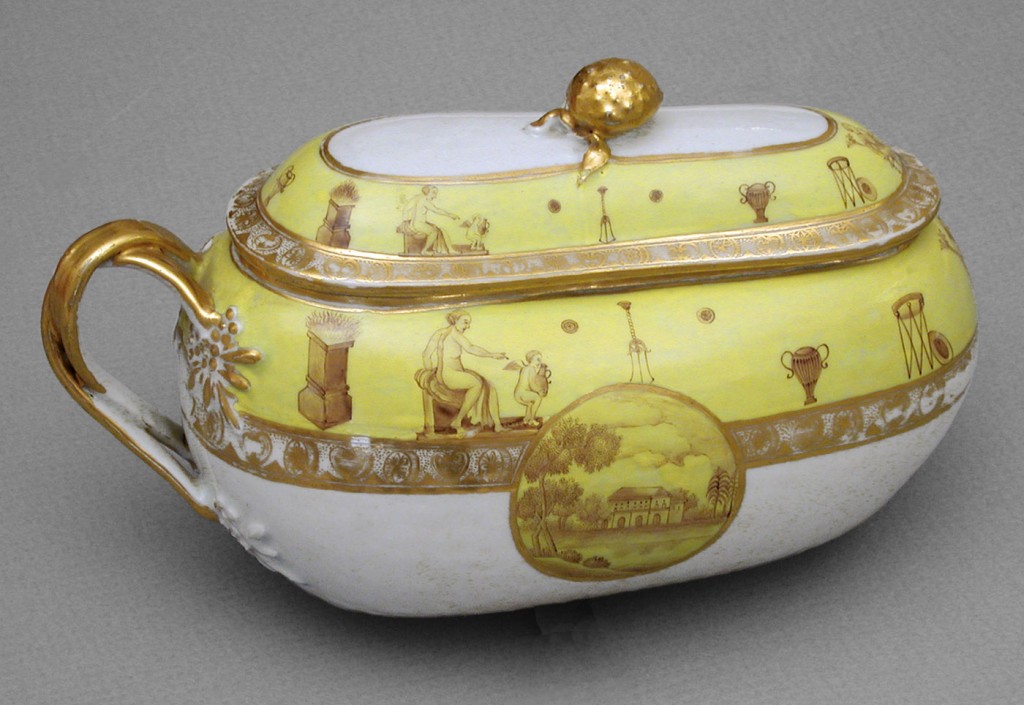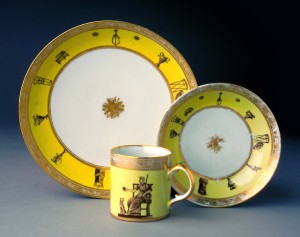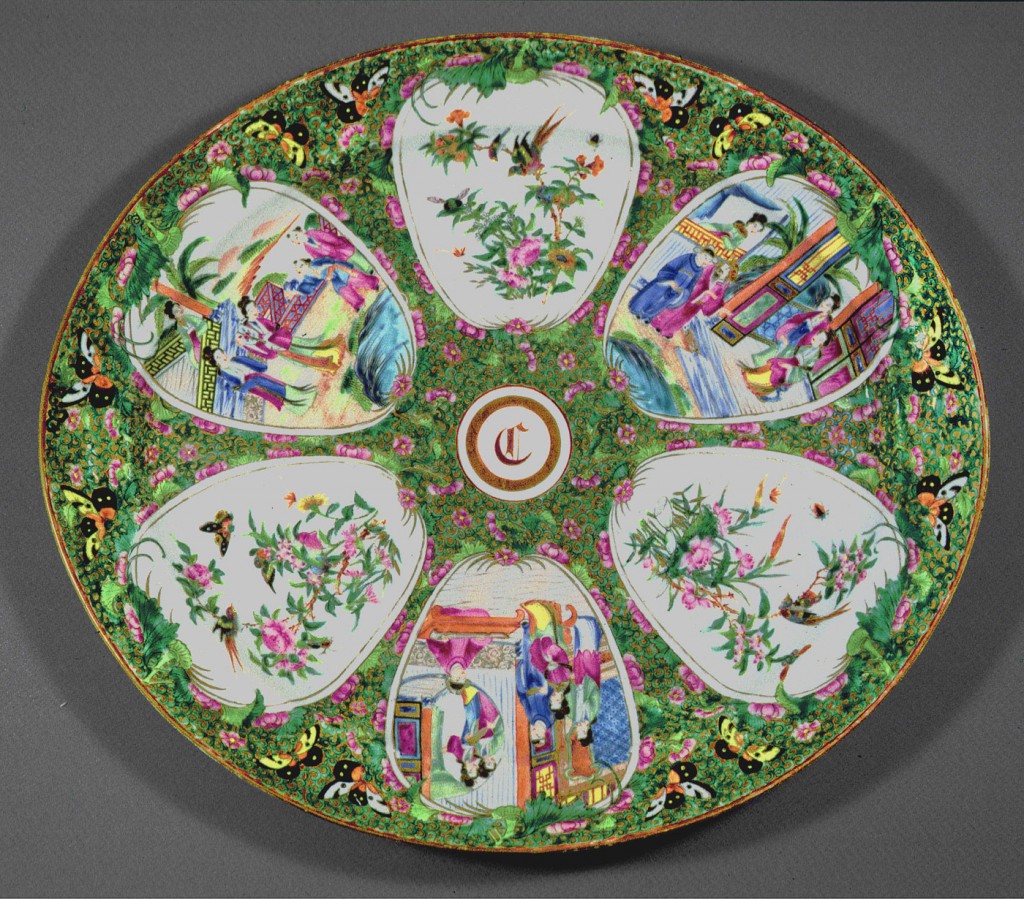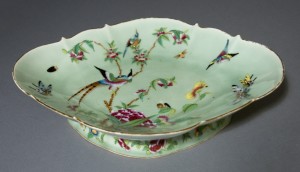America market wares associated with particular owners
Although many of the patterns on the tableware shown here also were popular in Britain, these objects were owned by identified Americans or match services once owned by them.
Dish, 1720–50
Imitating Japanese Imari wares in design and color, plates similar to this one have a tradition of ownership by Hugh Cargill and the Gore family of Concord, Massachusetts. Americans were probably unaware that in China the crab-and-coin motifs were a reference to harmony and wealth, and peonies symbolized high rank or social status.
Designs portraying Chinese figures in flower gardens with fences were among the most popular patterns for Western markets. A sauceboat and stand in this pattern descended in the Van Cortlandt family of the Bronx (now part of New York City). Dishes like the one shown here often were available in graduated sizes and were used for serving food directly or as stands for covered dishes, such as tureens. This pattern also was imitated on English ceramics.
This small plate is similar to those from a dinner service used by John Adams (later, the second president of the United States) and his wife, Abigail, at their home in Quincy, Massachusetts. The pattern is comparatively rare and perhaps was created as a special order.
This dish bears the popular “Quaker Cow” design (apparently copying a Dutch print) in shades of gray (en grisaille). Philadelphia Quakers Isaac and Mary Morris ordered a dinner service and mugs in this pattern, and the same design is drawn and dated 1797 in Mary’s sketchbook. An 1816 invoice from Canton lists “a tea set of china (cow landscape),” suggesting that the pattern remained popular.
The French neoclassical design on this bourdaloue—a woman’s chamber pot—matches the design on a Winterthur dish, cup, and saucer (right) originally owned by the Chew family, prominent Philadelphians involved in the China trade.
Plate, about 1830
This small plate, possibly from a dessert service, has a tradition of ownership by the Wheelwright family of Newburyport, Massachusetts.
The “C” on this rose medallion dish may refer to the Cotting family of Boston and Prides Crossing, Massachusetts. Rose medallion was also selected by Ulysses S. Grant and his wife when they ordered their 315-piece dinner service in 1868, the year before Grant took office as the 18th president of the United States.
So-called greenware dishes bearing this painted design were owned by Robert Bennett Forbes of Boston, Massachusetts. Heavily involved in the China trade, Forbes served in Guangzhou (Canton) as chief officer of Russell and Company, which imported goods into the United States.
This plate is from a service that originally included twenty-four plates and two platters with mazarins (pierced liners). The set was ordered in Canton in 1879 during a round-the-world cruise by former President Ulysses S. Grant and his wife. The ceramics were passed down to their daughter, Ellen Wrenshall Grant Sartoris.




